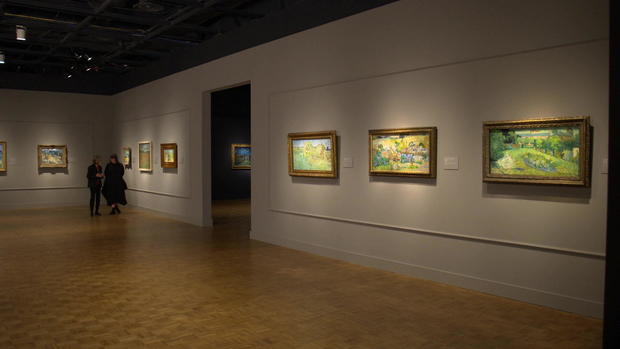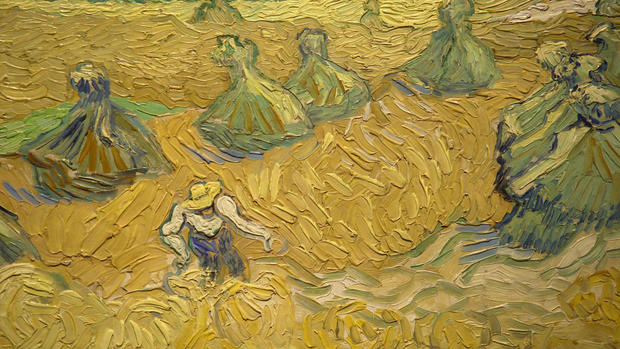When Americans were introduced to 21 works of Vincent Van Gogh at the first major U.S. showcase for modern art, the famed New York Armory Show of 1913, the response was anything but love at first sight. It wasn’t until 1922 that the Detroit Institute of Arts, or DIA, became the first museum in the country to buy a Van Gogh work, his 1887 “Self-Portrait.”
The price? $4,200. [It’s worth considerably more now.]
The only record of how the public responded to the work when it was displayed is from a newspaper account, in which a reporter noted that it “holds its own among the old masters.”
Detroit Institute of Arts
That self-portrait is the centerpiece of a new exhibition now on view at DIA, “Van Gogh in America,” marking the centenary of the museum’s acquisition.
DIA wasn’t alone; as curator Jill Shaw told “Sunday Morning” correspondent Rita Braver, a few other Midwestern museums soon acquired their own Van Gogh works. In 1926, the Art Institute of Chicago became home to several Van Gogh works, including “The Bedroom” (1889). Museums in Kansas City, St. Louis and Toledo soon followed.
Yes, it was all happening in the Midwest. “I think there was some kind of element of making our own name, and claiming a stake in a certain kind of avant-garde art that was still being reviewed and on its way to being accepted by East Coast museums,” Shaw said.
CBS News
In 1934 Americans became entranced with Irving Stone’s bestselling “Lust for Life,” a loosely biographical novel about Van Gogh. Combined with a 1935 exhibition organized by the Museum of Modern Art in New York (Van Gogh’s very first museum retrospective in the United States), it was a period of explosive interest in the Dutch artist.
Shaw considers Van Gogh to be the artist whose work is most beloved by Americans. “Oh, undoubtedly, and I think there’s a few reasons why: They’re joyful, they’re beautiful, the texture of his paint strokes is just like cake icing!”
Toledo Museum of Art
The 1956 film version of “Lust for Life,” starring Kirk Douglas as the artist, intensified Americans’ fascination with Van Gogh – and his inner demons. Van Gogh did suffer from mental illness, which led to him cutting off his own ear, as well as to what is believed was a suicide.
But Shaw insists works like “Starry Night” sprang from artistry, not madness.
“In fact, he’s painting this from nature and he’s painting it from life,” she said. “He’s very much in control. [He] even sent sketches of this work to friends in letters.”
© Musée d’Orsay, Paris, Dist. RMN-Grand Palais/Patrice Schmidt
Van Gogh died in 1890 at age 37, after working as an artist for only ten years. And though it may have taken decades for this country to appreciate him, Shaw said he embodies the American spirit: “Vincent was primarily self-taught, and I think Americans are particularly drawn to people who pick themselves up by the bootstraps, [overcome adversity], and do what they feel they need to do for their role in the world.”
For more info:
Story produced by Sara Kugel. Editor: Chad Cardin.
See also:


